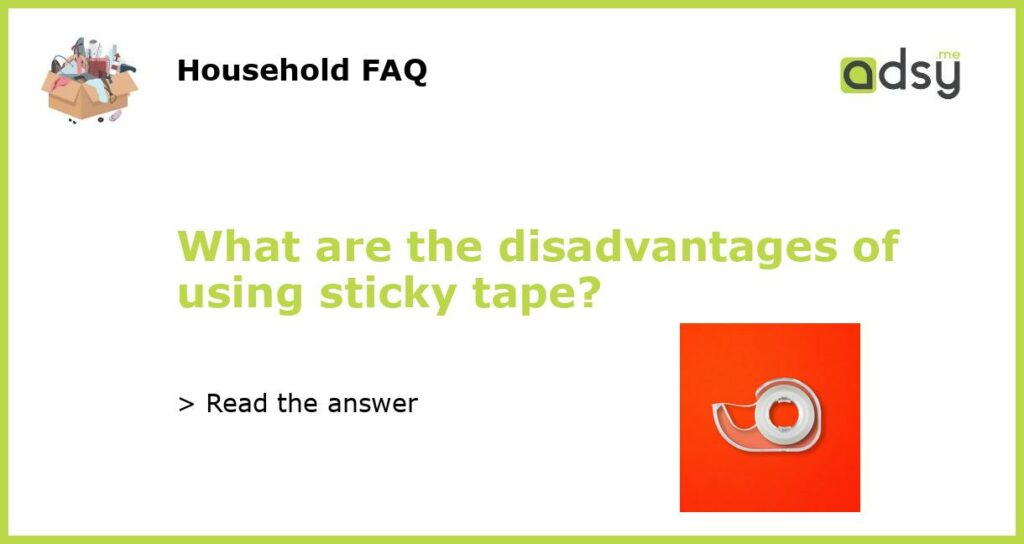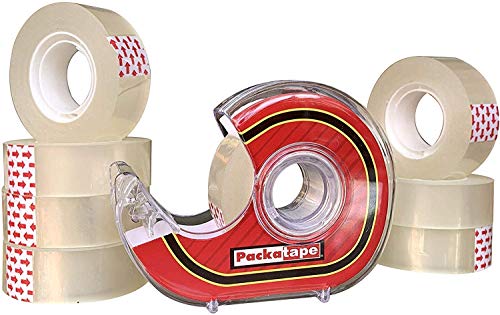The Disadvantages of Using Sticky Tape
Sticky tape, also known as adhesive tape, is a common household item that is used for a wide variety of purposes. It is often used for wrapping gifts, securing items together, or fixing broken items. While sticky tape is convenient and easy to use, there are several disadvantages to consider. In this article, we will explore some of these disadvantages and why they should be taken into account when deciding whether to use sticky tape or explore alternative options.
Residue and Damage
One of the main disadvantages of sticky tape is the residue that it leaves behind. When sticky tape is applied to a surface, it can leave a sticky residue that is difficult to remove. This residue can attract dirt and dust, making the surface look dirty and unkempt. Additionally, over time, the adhesive properties of sticky tape can weaken and cause the tape to become less effective. This can result in the tape falling off and leaving behind bits of adhesive that are even harder to remove. In some cases, sticky tape can even cause damage to delicate surfaces, such as paint or wallpaper, when it is removed.
Limited Durability
Another disadvantage of sticky tape is its limited durability. While sticky tape is often used for temporary fixes or quick solutions, it is not designed to be a long-term solution. Over time, the adhesive properties of sticky tape can degrade, causing the tape to become less sticky or lose its adhesion altogether. This can result in the tape coming loose and not effectively holding items together. In addition, sticky tape can become brittle and break easily, especially if it is exposed to extreme temperatures or moisture. This can make it unreliable and less effective for certain tasks.
Not Environmentally Friendly
Sticky tape is typically made from non-biodegradable materials, such as plastic. This means that it does not break down naturally in the environment and can contribute to pollution and waste. Additionally, the manufacturing process of sticky tape can be resource-intensive and contribute to carbon emissions. As more emphasis is being placed on sustainable and eco-friendly practices, using sticky tape may not align with these principles. Thankfully, there are alternative options available, such as eco-friendly tape made from recyclable or biodegradable materials, that can help reduce the environmental impact associated with sticky tape.
Difficulty in Removal
Removing sticky tape can be a challenging task, especially when it has been left in place for a long period of time. The adhesive properties of sticky tape can become stronger over time, making it harder to peel off without leaving behind residue or damaging the surface. This can be particularly problematic when trying to remove sticky tape from delicate or fragile items, such as photographs or artwork. In some cases, the removal process may require the use of harsh chemicals or solvents, which can further damage the surface or item.
Limited Applications
Sticky tape has its limitations when it comes to certain applications. For example, sticky tape may not be suitable for securing heavy or bulky items, as it may not have enough strength or adhesion to hold them securely. Additionally, sticky tape may lose its stickiness when exposed to extreme temperatures or moisture, making it ineffective for outdoor or wet environments. It is important to consider the specific requirements of the task at hand and determine whether sticky tape is the most appropriate option or if an alternative, such as screws or strong adhesive, would be more suitable.






